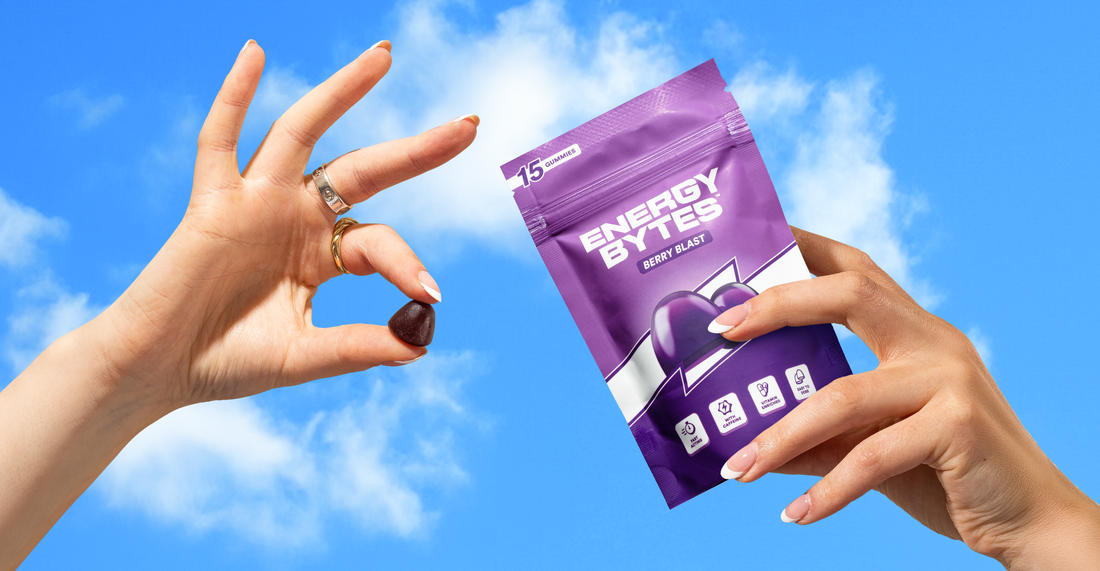Your Cart
0 Items

The natural stimulant that gives us instant energy Caffeine – so many swear by it as the stimulant that wakes them up and even helps them get through the day, but what is it really? Thankfully for us, it is one of nature’s natural substances. It’s one of the reasons we drink coffee for starters because caffeine is one of the key compounds found in the coffee plant (Coffea arabica L. and C. canephora Pierre). You also find it in tea, in guarana and even relatively small amounts in cocoa beans which means it’s in chocolate too. I’ve heard it said that coffee is one of the most successful plants on earth because our ‘need’ for caffeine has driven us to try planting it in so many countries. Even if that’s an urban myth, coffee and caffeine is available from virtually all the warm tropical regions of the world.
Caffeine is an alkaloid, known chemically as 1,3,7 trimethylxanthine and typically bitter tasting. We can tell when coffee has been decaffeinated for starters when we miss that edge that marks out a good strong cup. A typical coffee brew contains between 40 and 100 mg in a cup and many soft drinks too will contain caffeine up to levels of 60mg per 300ml bottle. We each experience different effects with caffeine but we certainly notice it when it is absorbed by the stomach and small intestine, usually within 45 minutes of ingestion.
We know that caffeine is ergogenic which means that it ‘increases our capacity for bodily and mental labour especially by eliminating fatigue symptoms’. That’s a standard dictionary definition but it’s been the case that sports and general physical performance have benefitted when people have ingested caffeine in whatever form (Shearer & Graham, 2014).
Caffeine crosses from blood into the brain where it is thought to exert its action because it stimulates the central nervous system. Only moderate doses are needed to improve our levels of alertness and make us feel less sleepy. The biochemical basis for activity comes from stopping adenosine binding to receptors in the brain. Adenosine is an important neurotransmitter in the brain that tells it that it must rest. Caffeine helps maintain alertness by preventing that effect occurring. It means too that by maintaining our alertness we sense our energy levels are not flagging either (Ferré, 2007).
Another effect that caffeine has on the body that is less well understood is to raise the levels of adrenaline in the blood as well as increase the brain’s sensitivity to key neurotransmitters such as noradrenaline and dopamine (Ferré, 2007; Sebastiao & Ribeiro, 2009). That implies the body is able to command energy resources which will help it meet whatever demands are placed upon it.
Caffeine isn’t just about instant energy because there are so many other health benefits associated with the compound. It’s been associated with reducing obesity and type 2 diabetes mellitus (Heckman et al., 2010), with reducing the risk of Parkinson’s disease (Palacios et al., 2012) and with Alzheimer’s (Eskelinen et al., 2010), and with improved athletic performance (Burke et al., 2013).
Caffeine does have safety caveats and as a responsible supplier we want to make it clear to you as to what the limits are. In 2015 the European Food Safety Authority (EFSA, 2015) published their scientific opinion on the safety of caffeine when its consumed. They concluded that single doses of caffeine up to 200 mg and a total caffeine consumption per day of up to 400 mg is safe. The only exception is for pregnant women.
Burke, L., Desbrow, B., & Spriet, L. (2013). Caffeine for sports performance. Human Kinetics.
EFSA NDA Panel (EFSA Panel on Dietetic Products, Nutrition and Allergies). (2015). Scientific Opinion on the safety of caffeine. EFSA J. 13:4102, doi:10.2903/j.efsa.2015.4102
Eskelinen, M. H., & Kivipelto, M. (2010). Caffeine as a protective factor in dementia and Alzheimer's disease. Journal of Alzheimer's Disease, 20(s1), S167-S174.
Ferré, S. (2008). An update on the mechanisms of the psychostimulant effects of caffeine. Journal of Neurochemistry, 105(4), 1067-1079.
Heckman, M. A., Weil, J. and De Mejia, E. G. (2010), Caffeine (1, 3, 7-trimethylxanthine) in Foods: A Comprehensive Review on Consumption, Functionality, Safetreduce our feeling y, and Regulatory Matters. Journal of Food Science, 75: R77–R87. doi:10.1111/j.1750-3841.2010.01561.x
Palacios, N., Gao, X., McCullough, M. L., Schwarzschild, M. A., Shah, R., Gapstur, S., & Ascherio, A. (2012). Caffeine and risk of Parkinson's disease in a large cohort of men and women. Movement Disorders, 27(10), 1276-1282.
Sebastiao, A. M., & Ribeiro, J. A. (2009). Adenosine receptors and the central nervous system. Adenosine receptors in health and disease, 471-534.
Shearer, J., & Graham, T. E. (2014). Performance effects and metabolic consequences of caffeine and caffeinated energy drink consumption on glucose disposal. Nutrition Reviews, 72(suppl_1), 121-136.